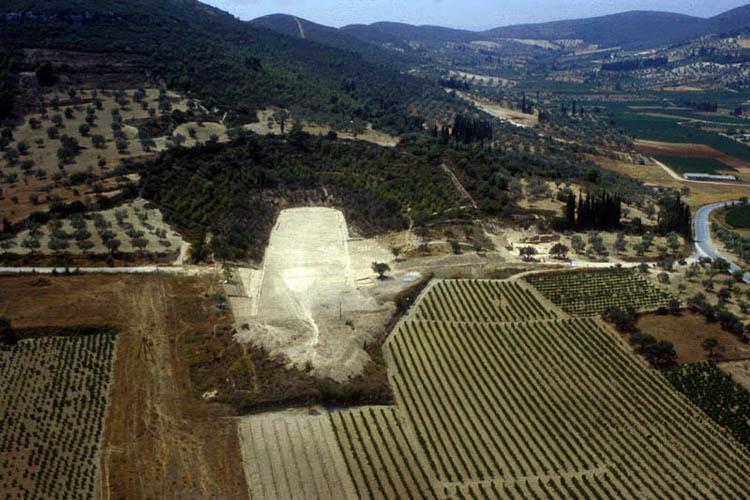
Aerial view of the Stadium from the north after removal of the road that bisected it.
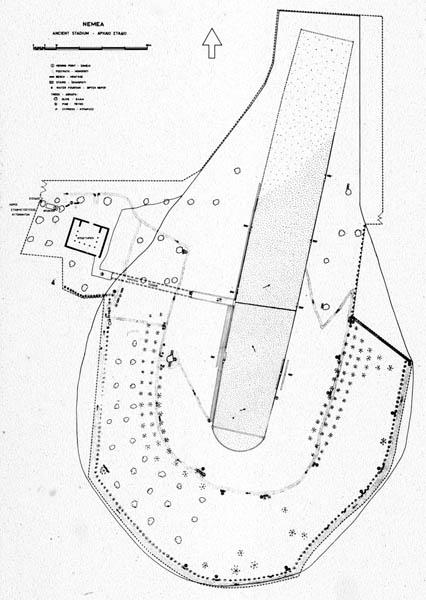
Plan of the Stadium with north end restored.
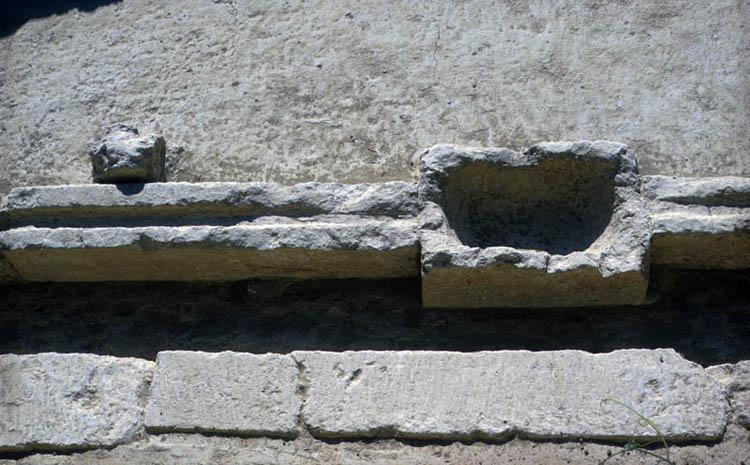
Water channel with basin and stub of the 300-foot marker on west side of the track.
The whole track, like every other ancient stadium track, was 600 feet long; in fact, the original meaning of the word stadion is that of a unit of measurement equaling 600 feet. The foot, however, varied in size from place to place. That at Olympia was about 0.32 m.; at Nemea the length of the foot was roughly 0.297 m. (also roughly the length of the foot at Delphi). Hence the total length of the Nemea track was about 178 m. as compared to 192 m. for Olympia. Herein lies a fundamental difference between ancient and modern athletics. In the former the competition was on a specific day at a specific place with no records of time involved. It was important only that every athlete competed with the same local rules and conditions, and was concerned with beating the other athletes, not the stop-watch. We might also note that only the winner was rewarded; second place and last place had the same value.
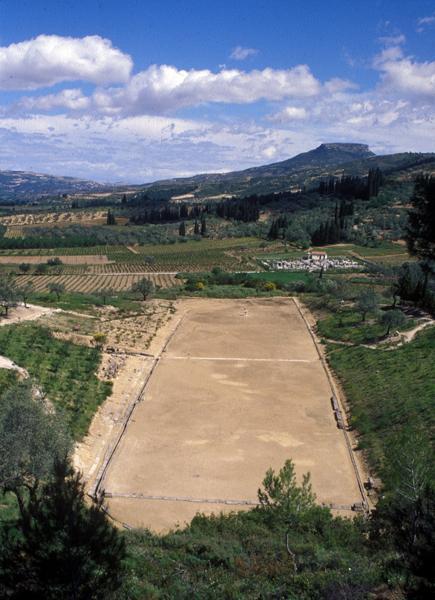
The track of the Nemea stadium from the south after completion of excavation, 2001. Mt. Apesas in the background.
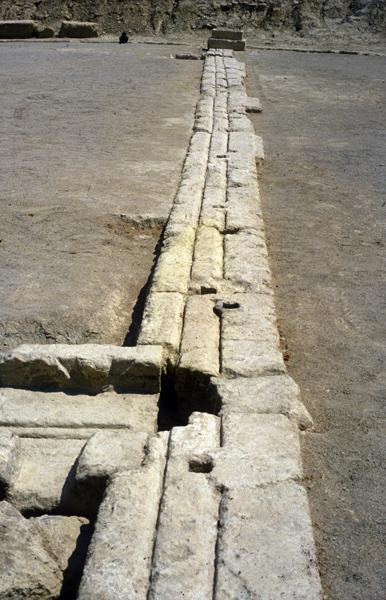
The starting line (balbis) at the south end of the track from the west.
The length of the foot at Nemea is derived from 100-foot markers along the sides of the track. Unfortunately, the artificial terrace that supported the northern part of the track eroded away in the Byzantine period so that about 1/3 of the original length, together with the northern starting line, has been lost.
The track widens at the middle, from 23.63 m. to 26.91 m., creating a perceptible bulge like that of other ancient stadium tracks, but for unknown reasons.
At the preserved southern end there is a typical starting line (balbis) with double grooves and the sockets for posts that divided the line and the track into 12 lanes. These lanes were later narrowed by a second series of sockets that were cut when projecting bases were added at either end of the line for the hysplex starting mechanism.
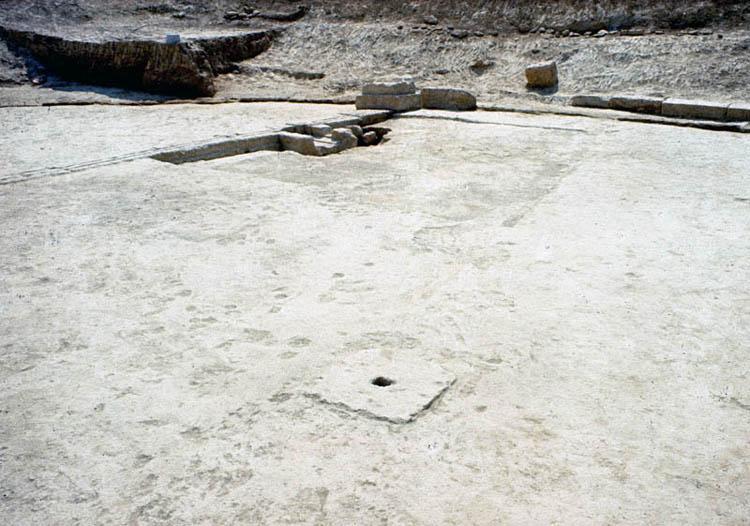
The square stone base with socket for the turning post from northeast with the starting line behind.
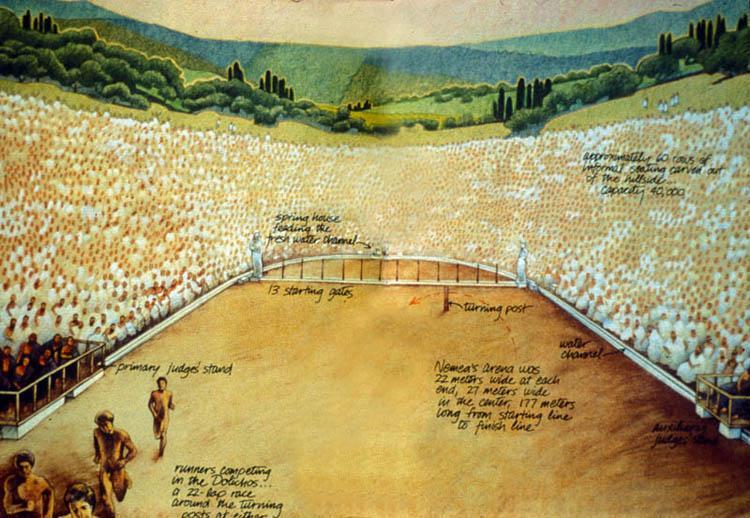
Drawing of restored track during a competition of the long-distance race (dolichos)
At a distance of 5.30 m. north of the balbis, and 3.40 m. west of the center of the track, is a square block which was set into the surface of the track and which has a socket, like those on the balbis, cut into its upper surface. This is the base for the turning post (kampter) which was used in the long-distance (dolichos) race.
The track itself is composed of a greenish-gray clay which represents dug-up natural clayey bedrock that bleaches to a yellow-white in the summer sun.